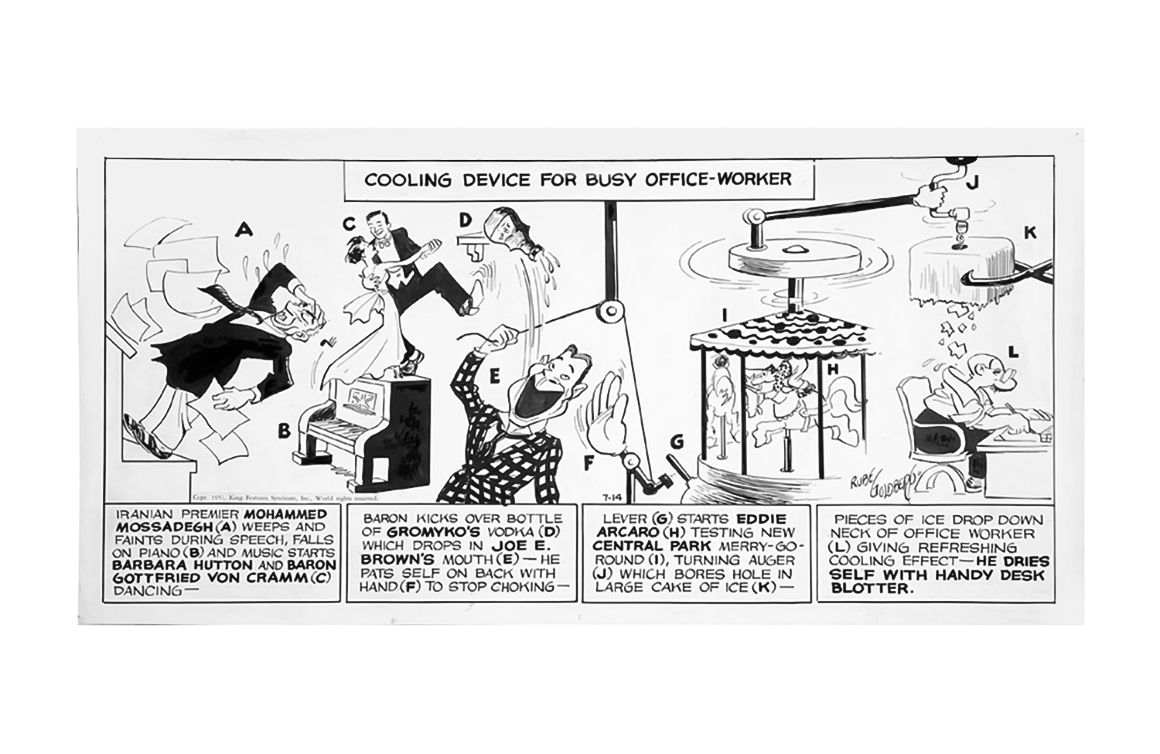Who was Rube Goldberg?
Rube Goldberg is one of the most influential cartoonists of the 20th century. People today recognize his name from the machines that bear his name; however, those machines are an outgrowth of the machines first depicted in his cartoons. He did so much more that earned him prominence, too. He was a founding member of the National Cartoonists Society, and the Society named their most prestigious award after him: the Reuben Award for Outstanding Cartoonist of the Year.

Why did the National Museum of American Jewish History (NMAJH) choose to host The Art of Rube Goldberg?
We saw this as an opportunity to tell the story of an individual who is well-known in pop culture but not well known as a human being and an artist. The exhibition introduces visitors to his personal story as well as his illustrations, sculptures, and inventions. It’s also a wonderful way to bring STEM and tactile learning and play to the NMAJH, through Goldberg’s work.

What items are included in the exhibit?
The exhibit includes a large variety of Goldberg’s artwork, from his earliest sketches to his work later in life. We have a number of pieces he produced for corporate clients such as Pepsi, Pennzoil, Lucky Strike, and Old Angus. Those brands earned considerable cache by hiring Goldberg to create artwork for them. We’re also fortunate to have a number of 3D objects and games based on his drawings.

Goldberg died in 1970 yet his work remains influential decades later. What keeps his work relevant?
It’s not only the whimsy and eternal curiosity revealed in his drawings, but also Goldberg’s ability to both overtly and surreptitiously comment on society and the things he observed. He lived through a transformational period in American and world history, which he captured in his political cartoons. He won a Pulitzer Prize in 1948 for his work.

What do you want visitors to take away from the exhibit?
I’d love for visitors to be inspired by Goldberg’s curiosity and his power of observation about the world he lived in, as well as his continuing relevance in cartooning and graphic arts. We’re a history museum so I also hope visitors have a moment of discovery, like: “Oh, that’s who Rube Goldberg is!”, and see him as an artist and human being. I’d also like visitors to see how his contribution ties in with American and American Jewish history.

The Art of Rube Goldberg runs October 12, 2018 to January 21, 2019. Learn more about the National Museum of American Jewish History on their website.












